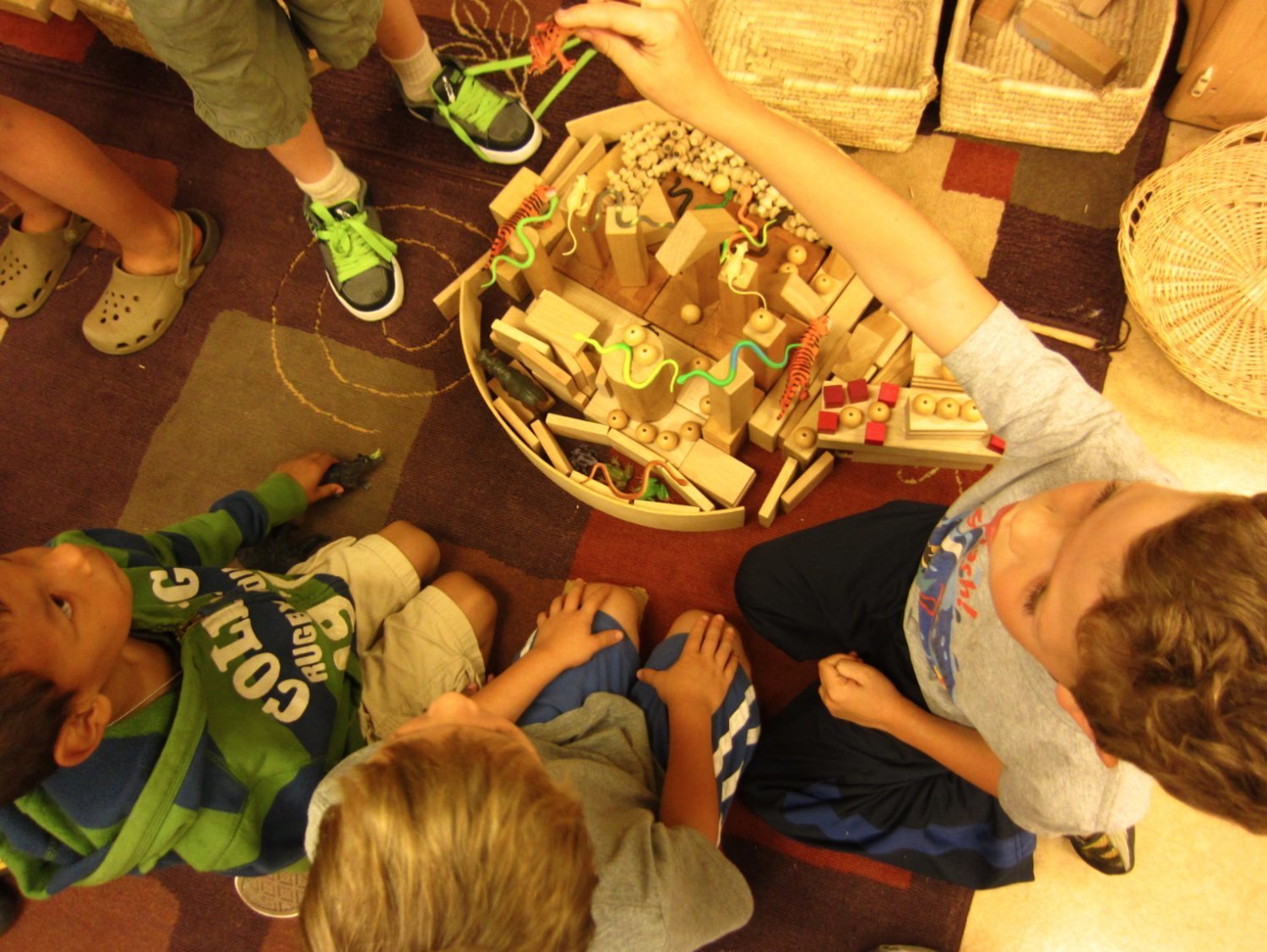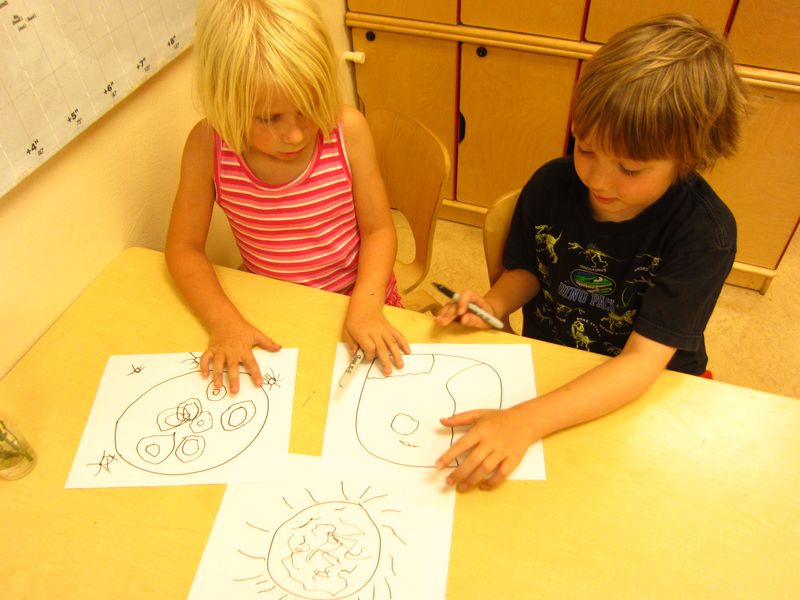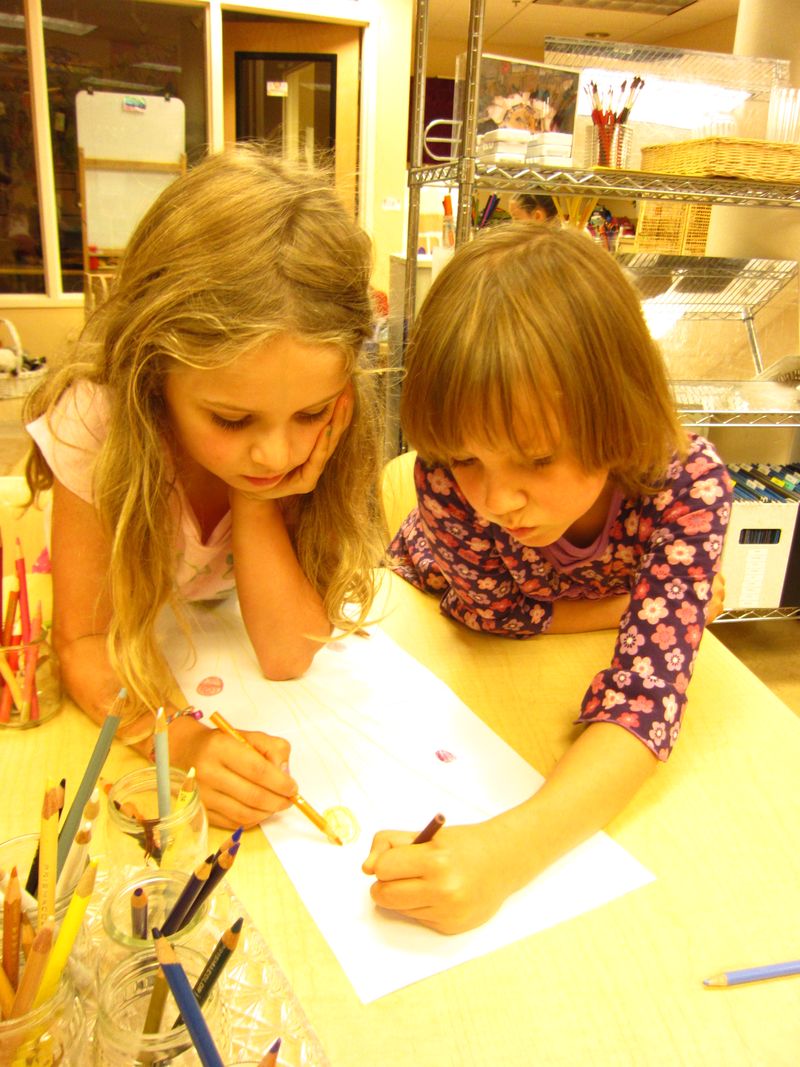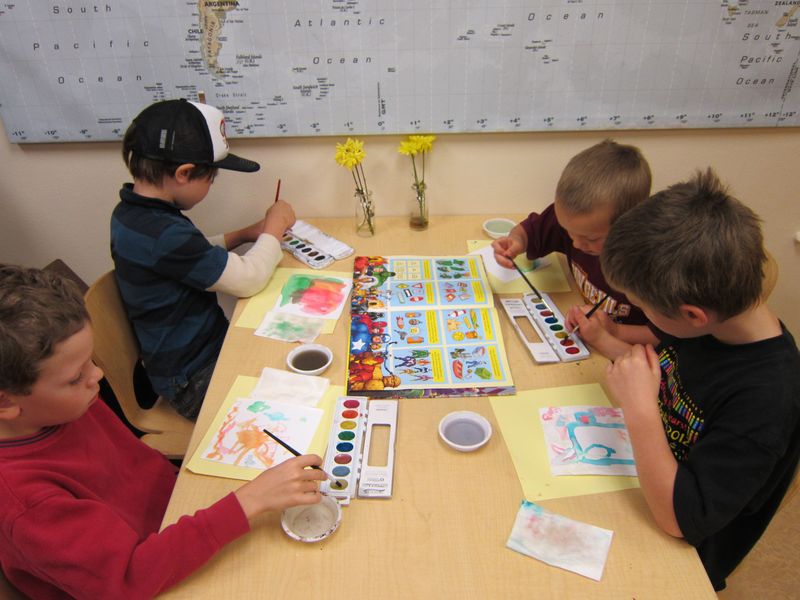The Role of Intention

In the following article, Opal School Teacher-Researcher Kerry Salazar gives us a sense of the approach a teacher-researcher might use to engage in intentional design of curriculum. She gives us a sense of professional thinking that has the potential to take us from curriculum consumers to curriculum creators who are actively contributing to the field.
By Kerry Salazar, Opal School Teacher-Researcher
What kinds of skills will best support children to be successful citizens in our world today? In an ever-changing world, it’s becoming clear that school needs to look different for today’s children than it did for many of us. The increasing role that technology plays has decreased our need to memorize facts, because with the click of a button we have access to all kinds of information that would have taken exhaustive research in the past. The aim of education today should be geared toward what is oftentimes referred to as “21st Century Skills.” These are skills that have little to do with memorizing facts, and much more to do with critical thinking, communication, collaboration, creativity and innovation.
 But where do we begin? How do we support the building of these very complex, higher-order skills with young children? What does it look like when children are being metacognitive– when they are thinking about their own thinking, making plans, setting intentions and following through– and finding creative alternatives when challenges (inevitably) arise? These are skills that need to be built, nurtured and supported. If we want our children to develop these skills, then
But where do we begin? How do we support the building of these very complex, higher-order skills with young children? What does it look like when children are being metacognitive– when they are thinking about their own thinking, making plans, setting intentions and following through– and finding creative alternatives when challenges (inevitably) arise? These are skills that need to be built, nurtured and supported. If we want our children to develop these skills, then
we must provide them with experiences that support their practice and
consideration.
What does this approach look like in a community of first and second graders? Our research
at Opal School aims to invent practice that supports the authentic development
of 21st Century Skills, without sacrificing the skills we traditionally expect
children to learn in grade school.
This year we’ve been asking ourselves:
What happens when we begin the year talking with children about intentions?
What happens when we give time and space to unpacking the meaning of that word?
What happens when we support children to set their own intentions from the beginning?
We’ve been exploring these questions through Story Workshop this year. In the past, children have been expected to communicate what story they are working on on any particular day and what material they will choose to tell their story with that day. We have always expected the children at Opal School to communicate their plans. But what happens when we take that one step further? What happens when we not only ask children what material they will use, but ask them to try and express what it is they are hoping to use that material for, or the ways in which they are expecting that material to support or influence their thinking and their story that day?
For a peek into the kind of language the children have come up with (from the third week of school) to describe possible intentions they might have when creating a story, here’s a list that they created:
What are my intentions today?
to bring back a memory
to remember more details
to find new details
the material matches my mental image
I think the material can capture my image
it will help me imagine what I might want to do
it will allow me to make something new
to wake up a brand new story
to make my story something memorable
to capture my image in words
to find out what the material does
to learn more about what is going to happen next
Already the children are showing us their willingness to dive into this work together. Their choice of language, their knowledge of what it means to be a writer, their understanding of what works well for themselves as authors, and their level of engagement reminds us over and over again of the incredible capacities that young children hold and show when given the opportunities to do so.




My name is Zalika and I am the anchor teacher in the Opal 2 classroom Kerry speaks of in this article. I thought I would share an update now that we are two months (rather than 3 weeks) into our work with intentions. Since Kerry and I have introduced this idea of “intention” I have been fascinated by the ripple effects. Once of the biggest impacts I see is in the children’s awareness of their process as we move through their day. To state your intentions requires a degree of metacognition and creates a foothold for reflection that allows for a different kind of experience than when your simply find yourself in a place with no awareness of how you arrived, if this is where you want to be or if you were a part of the process of getting there. With the practice of explaining their intentions each and every time they go out to story workshop, our first and second graders begin story workshop with self identified goals and self-motivating energy to meet their own expectations. Holding children accountable while giving both support and expectation honors their abilities to set their own course and supports their ability to reflect on what worked and what didn’t. Our expectations of followthrough become just a natural extention of their intention for the day. I often ask kids what they feel really good about at the end of a work time and the responses are much richer when there was an awareness of intention. Children feel proud of both their work that met their intention as well as their awareness of their flexibility when they exceed their own expectation or are suprised by a new idea that woke up a new intention. Indeed,we are wondering together about the process of “changeing” intentions and are currently involved with conversations with students who are articulating why they want to change course(start a new story or material) in a more explicit way then I’ve experienced before. I have also found that engaging with a child around their intentions (while sometimes a long process) is so useful in having a point of co-creation with a child that still allows the child to maintain their role as protagatist in their own learning. As we’ve used intentions this year we’ve discovered that “staying open to possibility” is a very important intention that once owned allows young children to view any bend in the road as one of opportunity. It is so impowering to have a child whose intention was to stay open and see what would happen recieve the positive feedback of making something new from an “oops,” or finding inspiration for their story in a surprising place. Certainly this word “intention” is one alive in our room but we have yet to unpack all of the possibilities. I am wondering about the possiblity of unpacking the relationship between intent and impact in the social emotional relm. It feels like there are a great many possibilites inherent in the idea of intentional community. I am also really curious about the impact of all this intentions work on the development of executive function and habits of mind that support focus, motivation and reflection some ot the 21st century skills Kerry speaks of in the article. Kerry and I are both curious about how this idea of intention will unfold as the year moves on. I must admit, I am not sure if I really believed children could be so metacognitive about their plans but I am once again amazed.
In thinking about the role of intention and children engaging in metacognition I am reminded of the work I did in graduate school for my thesis. I studied the influence of pedagogical documentation on children’s use of metacognition. I conducted my research in a 4 and 5 year old preschool classroom. I have to admit that I too, like Zalika, was unsure if children of this age would be able to engage in metacognitive thinking when planning. I too was amazed! As the children took part in their small group investigations, teachers provided them with daily documentation of what they had been doing, making and talking about. It was amazing to watch the children’s conversations go from talking about what they were doing, to talking more about why they were doing something and what they wanted to happen. Their intent was clear! It was so rewarding to listen as they shared their intentions with their peers. As the children started thinking more about their own thinking, I discovered I had to ask less and less questions to better understand their thinking. They just started to naturally share what they were doing and why they were doing it. As children questioned and listened to each other, I could hear them defending their own ideas and explain with great detail the reasons behind what they were doing and what they were hoping to do. Documentation played a huge role in the children reaching the level of thinking known as meta-cognition at such a young age. The images of them working and the artifacts they had created were visual reminders of their thinking and allowed them to look at it again, reflect, and then think more about their thinking. As I shared with the children their conversations, the thinking that they verbally shared was said back to them. I read dialogue of things they had previously said and I was surprised,at times, when they had denied saying things. I think it was them actually trying to restate what they were really thinking. It was crucial to allow the right amout of time for them to reflect on what they had said, think about their own thoughts and then share them back as they had intended. It makes me wonder; how often do we as teachers interpret something one way when the children really had a different intent? I find your research on intent to be very interesting and am excited to hear of more findings you unfold.